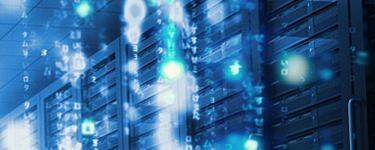SSDs can offer a significant cost advantage in the data center, especially when considered in light of the Total Cost of Ownership (TCO) model. Many storage vendors measure affordability in dollars per gigabyte, a simple metric where traditional hard disk drives are still more affordable than SSDs. TCO is a more comprehensive measure, including not only the capital expenditure for the initial purchase but the operational expenditures (OPEX) over the life of the system. While the initial cost for SSD-based arrays may be higher than HDDs, the reduction in OPEX for a five-year lifespan often tips the cost calculations in favor of SSDs.
OPEX includes the cost of electricity and cooling, labor costs to manage the system and support costs for replacing hardware that fails. SSDs, with much lower power requirements and less heat production, can reduce operating costs substantially. With an average annual failure rate of as little as 0.5 percent, SSDs are much more reliable than HDDs, which can be up to six times more likely to fail, resulting in costs to replace the drive, potential data loss and time spent to rebuild the arrays.
Adding Years of Life to Storage
While first-generation SSDs had relatively short lifespans compared to hard drives, modern SSDs can offer years of life in the data center. Their lifespans are still limited compared to hard drives, but new SSDs are more than long enough to meet three-to-five year replacement lifespans.
Redefine Total Cost of Storage Ownership
Explore how solid-state drives (SSDs) offer numerous cost advantages over hard-disk drives. Download Now
In addition to the basic cost of the drive, the drive’s performance should also be considered, especially in situations typical of a data center application, where many users are simultaneously accessing a server storage system. With hard drives, it may be necessary to purchase a great many low-capacity drives to get the aggregate performance necessary for applications with heavy input/output requirements such as virtual desktop infrastructure (VDI) or server virtualization. SSDs, with higher performance per drive, can meet the same requirements with relatively few drives, resulting in more efficient storage systems with lower OPEX requirements that still meet performance goals.
Conserving Energy in the Data Center
Another method of conserving energy with hard drives is to “spin down,” or put drives to sleep when there is no immediate need to access information in a server. With a hard drive, this entails shutting off the motor that spins the platters on the drive. When a new request for data is made to the system, the drives start spinning back up, allowing input/output to resume. The time to spin drives back up is a few seconds, not long by human standards but a very long time to a system that measure wait times in thousandths or millionths of a second.
With SSDs, the idle power consumption mode is automatically enabled when no data is being transferred, power usage drops to a tenth of normal and there is no time required to resume operations. In this scenario, power is saved when data is not being moved, without the need to wake the drives up again. By consuming less power over time, SSDs can ultimately offer a longer lifespan for data center installations, since they are not always producing energy to constantly keep the technology running.
Between the lower operational costs for power when in use, the lower cooling costs, the higher performance per drive and the reduced energy consumption when not in use without spin-up times, SSDs offer substantial benefits over the service life of a hard drive.
Check out our full line of SSDs to find the perfect storage solution to address your organization’s needs.








